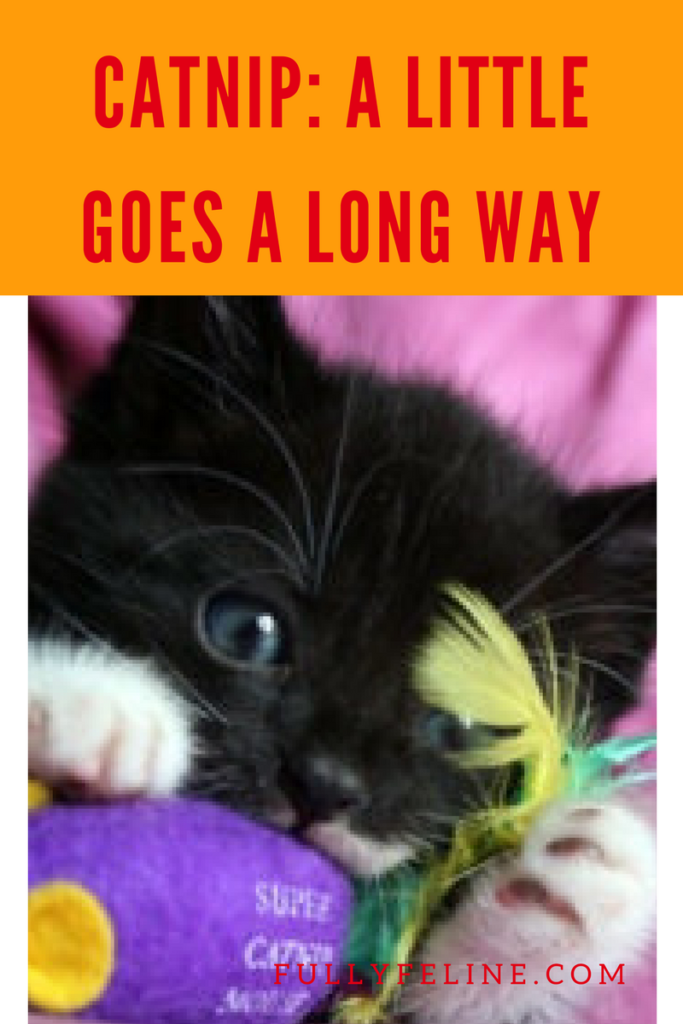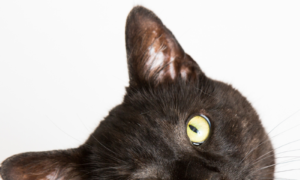Catnip is a treat many, but not all, cats love. The chemical nepetalactone is what gives cats a temporary feeling of euphoria. The euphoric feeling usually lasts about 15 minutes and afterward cats are relaxed and often ready to take a nap.
Although some cats like to nibble on catnip, the effects are not felt unless it is sniffed. Catnip helps a stressed cat relax, livens a play session or gets a lazy cat up and moving.
A little goes a long way, though. If constantly exposed to its scent, cats can become immune to its effects. Don’t leave catnip toys lying around all the time, but rather limit your cat’s exposure to 1-2 times a week.
Disclosure: This post contains affiliate links. We receive a small commission on items purchased via these links, at no additional cost to you.

Shopping For Catnip
When shopping for catnip, invest in good quality. If you’re buying it loose (often a better option), check the label to be sure it contains only leaves and blossoms and is preferably organic. Lower quality nip often contains stems which can be hard and sharp. The stems will make it uncomfortable for your cat if he likes to eat catnip.
If you buy a large quantity of loose nip, divide it into small portions, put it into airtight containers and store in the freezer to keep it fresh. When ready to use, remove a portion from the freezer and allow it to come to room temperature before giving to your cat.
Buying high quality loose catnip gives you the option of filling your own cat toys. If you buy pre-filled toys, it’s hard to gauge the quality of nip in the toy.
Many cat toys are now available with special pockets so you can fill it with fresh nip before giving to your cat. You can also “nip up” other cat toys by simply putting the toys in a container of fresh catnip and leave it for a while. When you take the toy out of the container, it will have the scent your cat loves.
It’s easy to make your own quick and easy catnip toy by filling a small sock with fresh nip and knotting the top. Before giving it to your cat, rub the sock between your hands to maximize the catnip potency.
Alternatives
There are many cats that don’t respond to catnip, especially those younger than 6 months old. Here are some alternatives that have similar effects:
Silvervine
The chemical compound cats respond to in silvervine is Actimidine. Cats respond very much like they would with catnip, except the effects last longer. Cats normally respond to nip for about 10 minutes. With silvervine, the effects last up to 30 minutes!
Honeysuckle
This plant contains the same chemical as nip, nepetalactone, that cats respond to. The difference is younger cats that don’t respond to nip do respond to honeysuckle. There are almost 200 varieties of honeysuckle, but the one cats respond to is Lonicera tartarica. The plant’s berries are toxic to cats, so be careful to only give your cat the woody part. To restore the scent, splash with water.
Valerian
Containing the same chemical as silvervine, actimidine, to stimulate your cat, valerian is another alternative to check out. Be cautious, though, I’ve read valerian can be rather smelly. So your cat might enjoy it, but you might not as much.
Since these plants may be new to your cat, offer it to him in small doses, just a few minutes a session. To find the plant your cat prefers, check out a sampler pack that contains several alternatives, then watch your cat’s reaction.
Have you tried nip alternatives? What did your cat react to most? Please leave us a comment, we’d like to hear from you!





